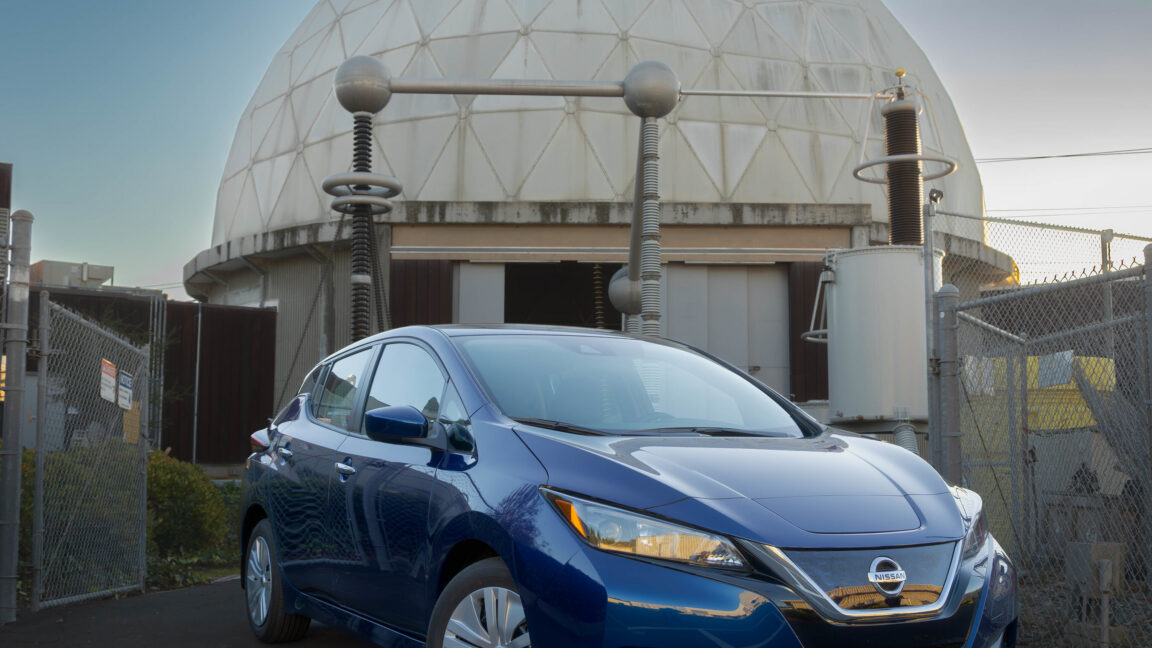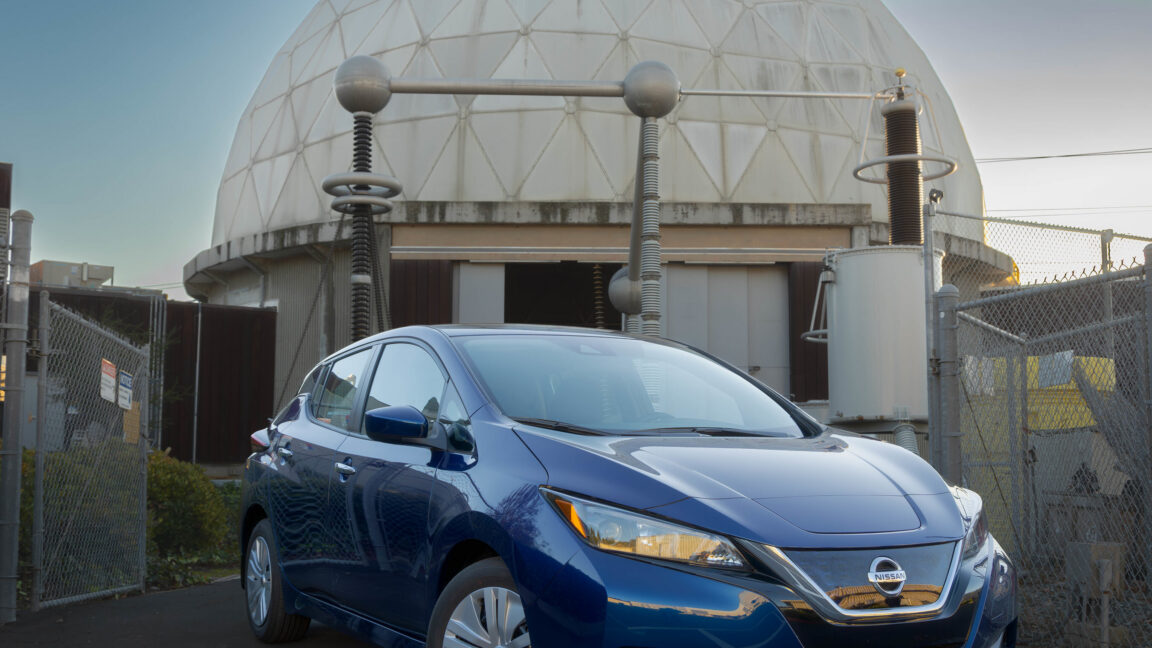
The future isn’t all bad. Take electric vehicles, for instance. There’s one aspect where traditional cars have the edge—quick refueling—but even the least efficient electric vehicle surpasses its gasoline counterpart by a significant margin. In fact, the benefits are so pronounced that they compensate for all the additional energy required to produce the battery within just one or two years. They operate more quietly and offer a smoother driving experience. Plus, in emergencies, they can supply power to your home from the garage. What about an airport?
Granted, I’m not referring to a large international airport (though I definitely need to reach out to someone at Dulles International Airport regarding my concept to electrify those Space 1999-like mobile lounges at some point). Nonetheless, in Humboldt County, California, a microgrid at the Redwood Coast Airport has recently incorporated bidirectional charging along with two Nissan Leaf EVs into its operations.
This microgrid has been functioning since 2021, featuring a 2.2 MW solar array, 8.9 MWh of battery storage, and a 300 KW net-metered solar setup. It can send surplus energy back into PG&E’s local grid while also drawing power from it; however, during an outage, the microgrid can sustain airport operations.
Turning over a new leaf
One of the Leafs (from the 2021 model year) was acquired by the Humboldt County Aviation Division, while the other is a 2020 model supplied by Nissan. These belong to the earlier generation of the Leaf we recently tested, still utilizing CHAdeMO for DC fast charging. However, the second-generation Leaf was always designed for vehicle-to-grid capabilities; it’s just that no pilot program was established in North America until now, to my knowledge. We’ve witnessed school buses and F-150s entering the V2G realm, and it’s encouraging to see the second-generation Leaf finally realizing that potential in North America, even if it has recently been succeeded by a newer model.

